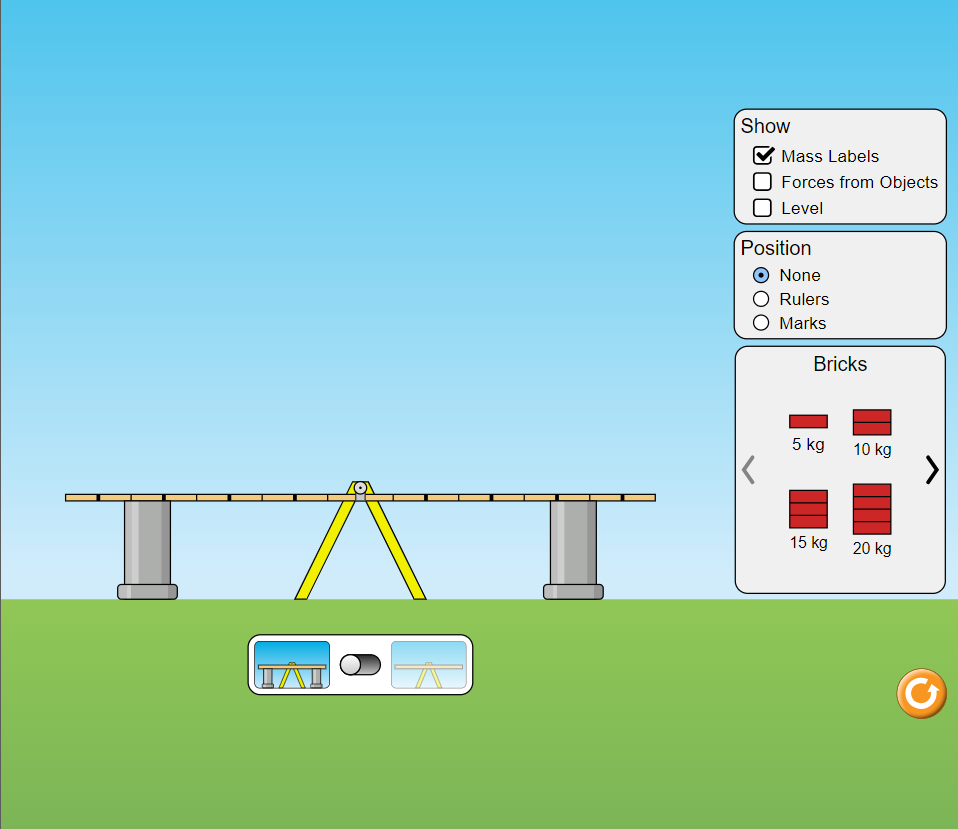The following lab can be replicated in person by using a metre rule, masses with mass holders and a glass prism to act as the base.
Theory
The principle of moments states that for a body in equilibrium, the sum of anti-clockwise moments equals the sum of clockwise moments: $$ \begin{equation}\begin{aligned} \sum ACW\ moments=\sum CW\ moments\\ \end{aligned}\end{equation} $$ A system can thus be made to be in equilibrium by ensuring that these sums are balanced.
Aim
To verify the validity of the principle of moments
Materials/Apparatus
Diagram

Method
- Choose the ‘Balance Lab’ option
- Click the switch to remove the pillars under the beam
- Under the position section, choose the ‘Rulers’ option
- Place a 20 kg mass on the left side at a distance of 0.25 m away from the pivot
- Place a 10 kg mass on the right side so as to make the beam level again
- Record each mass and its distance away from the pivot
- Repeat steps 4 to 6, placing the 20 kg mass on the left side at distances ranging from 0.5 m to 2 m at regular intervals of 0.25 m. Use multiple masses (except for a 20 kg mass) on the right hand side when the left hand side moment becomes too large
Results
| Distance of left-hand side 20 kg mass from pivot | Right-hand side masses with their distance away from the pivot |
|---|---|
| $0.25$ | 10 kg mass at 0.5 m |
| $0.50$ | |
| $0.75$ | |
| $1.00$ | |
| $1.25$ | |
| $1.50$ | |
| $1.75$ | |
| $2.00$ | 10 kg mass at 2 m, 15 kg mass at 1.25 m, 5 kg mass at 0.25 m |
Data Analysis
- For each row in the results table, calculate the sum of anti-clockwise moments
- For each row in the results table, calculate the sum of clockwise moments
- For each row, compare the sums
